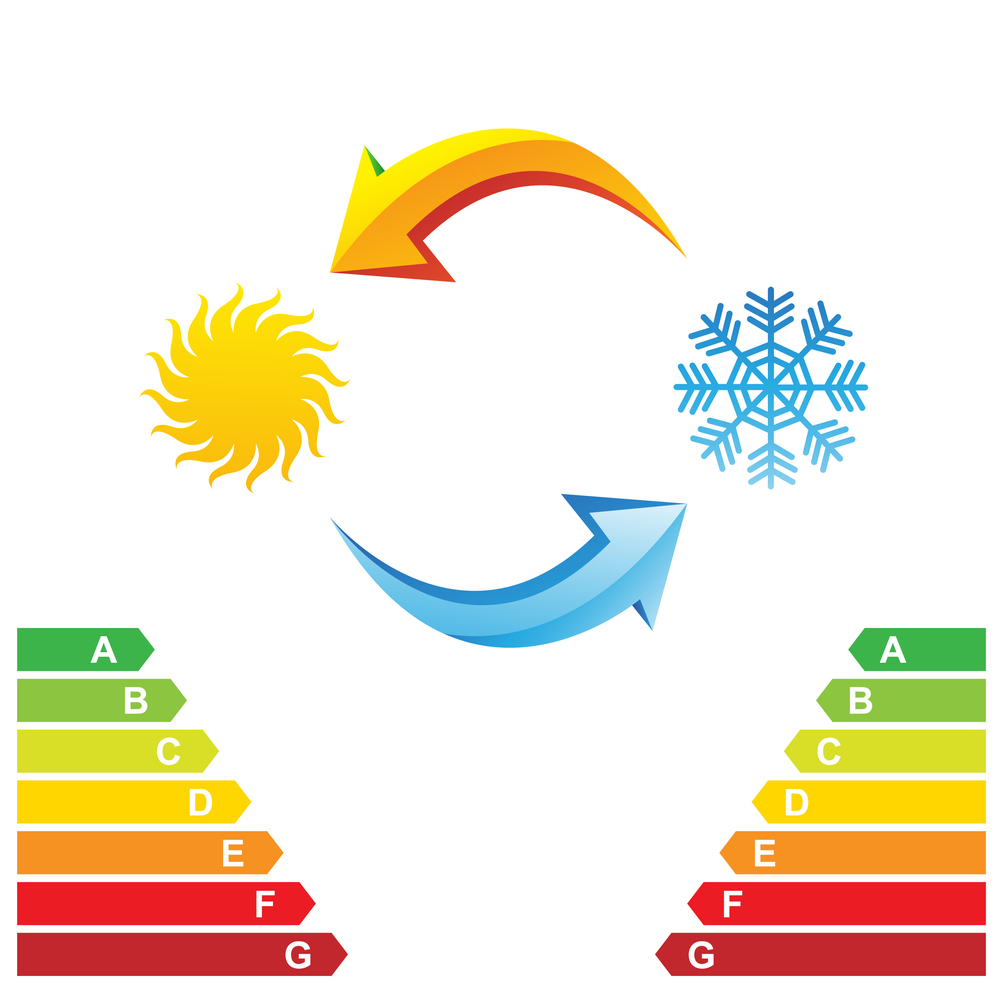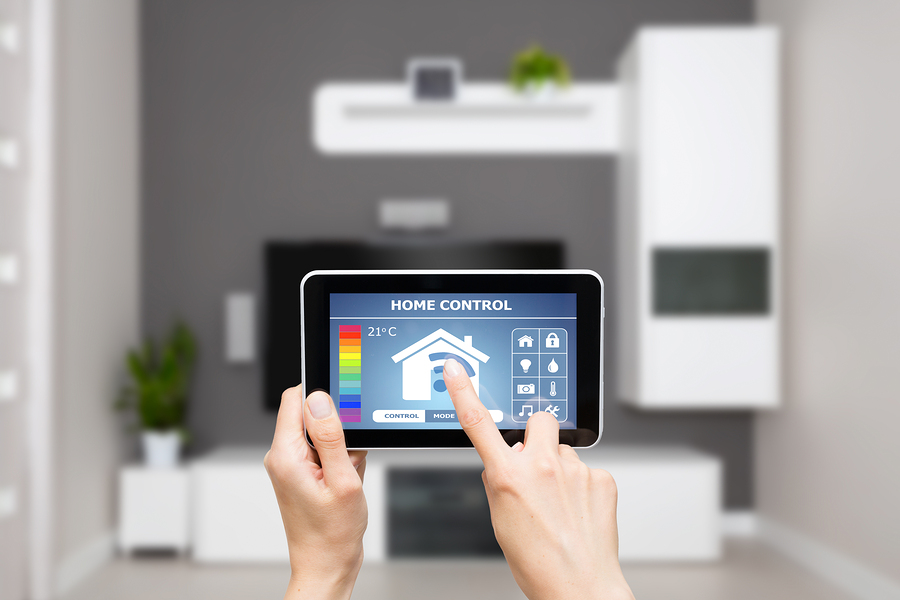Saving money on utilities is on every property manager’s mind; Water, electricity, and heating and cooling account for about 25% of operating costs for commercial businesses. However, about 30% of energy is wasted every year due to outdated and poorly maintained systems and equipment.
This loss seriously affects a company’s bottom line, as well as the experience of everyone employed in a facility. But it isn’t too late to save money on energy, and even small changes can help reduce energy costs by 3-6%.
Here are the top 8 ways property managers can save money every month on utilities:
1. Replace Landscaping with Drought-Tolerant Alternatives

Water accounts for a large portion of energy costs for commercial spaces. From kitchens, bathrooms, and cooling systems, water is used every day, multiple times a day. But did you know that about 22% of the average water usage for a business goes to landscaping? And for more of a surprise, the EPA estimates that evaporation wastes about 50% of the water used to irrigate your commercial lawn. To save money, you should consider taking the grass out completely and replacing it with native, drought-tolerant ground cover, plants and shrubs. These type of plants are accustomed to your specific climate and won’t require a lot of water or other maintenance. To fill in any areas that would benefit from larger foliage, you can fill them in with quality artificial plants and trees.
In addition to implementing native plants, you can also install hardscape structures for a functional and elegant alternative to grass. If you do, however, prefer to keep the greenery with drought-tolerant options, you still need irrigation. Smart irrigation is key, and energy-efficient options include drip irrigation and sub-surface drip irrigation. You can read more about these ideas here. Artificial Plants and Trees is a wholesale company that specializes in providing home and business owners with high-quality artificial alternatives to indoor and outdoor landscaping. Using artificial trees, plants, and flowers is a great way to dramatically cut landscaping costs.
2. Switch to Water-Conserving Products Indoors

Home Water Works, a website created by the Alliance for Water Efficiency, suggests that property managers should compare their building’s water use to industry benchmarks if these numbers when possible. Water consumption benchmarks provide information on the average water use for different commercial sectors and can be used as a tool to gauge how much your property should be spending every month on water. It may also be cost-effective to hire a professional auditor to carry out an on-site survey to determine what your water usage is, and what areas you can improve to save money.
According to the EPA, property managers should look into replacing the toilets with ultra-low-flow toilets, installing faucet aerators, using water-saving ice makers, replacing worn-out appliances with water-conserving models, and replacing “once through” cooling equipment with an options that is cooled by cold air or recycled water. If your facility contains a working kitchen or a laundry area, be sure to turn off these appliances when not in use and to only wash dishes or clothes when the loads are full. Be sure to repair any leaks in your cooling equipment and shut off units when not needed. Turn off dishwashers when not in use, and scrape rather than rinse dishes before washing. For commercial spaces that have residential-style washing machines, be sure to select a low water setting.
3. Upgrade to LED Lighting

Considering the fact that lighting makes up for about 35% of the average commercial space’s energy costs, property managers need to look into the most energy efficient options available. LED lights provide the longest lifespan for a fraction of the yearly cost when compared to incandescent bulbs and fluorescents. LEDs last for about 50,000 hours depending on their use, while incandescent bulbs last for only 1,200 hours and fluorescents for about 8,000 hours.
When it comes to saving money, LEDs will only cost property managers about $32.85 a year to operate, while incandescent bulbs cost $328.59 and fluorescents $76.65 per year. And these are only a few of the benefits that come with switching to LEDs. Bluestone and Hockley, a property management company, encourages property managers also to take advantage of the boost in efficiency of their air conditioning system when replacing lights with LEDs. LEDs do not emit UV rays, so they don’t contribute heat unlike other bulbs. LEDs also provide 70% more light than their counterparts and may allow you to scale back on the number of bulbs needed to light a room, further saving you money. According to Forbes, property managers can expect to save about 80% on energy costs when they switch their light fixtures to LEDs.
4. Prioritize Lighting Depending Upon Occupancy Times and Zones

Facilities that remain open 24 hours a day, seven days a week eat a lot of energy if they aren’t controlled based on occupancy levels and where employees are concentrated. If your building doesn’t adjust the lighting based on operation schedules, Facilitiesnet, an online building operation and facilities management publication, recommends installing “economize mode” lighting at night. This ensures that the lights are turned on only in the areas where your custodian staff or customer service representatives are present, and where the employee vehicles are in the parking lot. Depending on the wiring of your site, you may be able to shut off the lights in some areas completely, or every other light fixture throughout the main parking lot. In the meantime, property managers can turn off vending machine lights and/or post a note stating that the lights have been removed to reduce energy costs.
Additional ways property managers can save money with lighting is by setting the appropriate light level for each space in your building. For example, the rooms containing your employees should be brighter than the areas that aren’t occupied as frequently. However, by simply asking employees, you may find that they prefer low lighting in their work area to reduce glare on computer screens. You can also consider implementing personal controls for employees to adjust the lighting directly over their workstation. Studies have shown that individual controls can improve worker productivity while reducing eyestrain in addition to saving about 10% more energy compared to standard, generalized lighting.
5. Switch to an Automated System with Programmable Thermostats

Building Automation Systems (BAS) are used to control heating and cooling systems. These systems help property managers save an average of 15% on their heating and cooling bills, according to Althoff Industries, a heating and cooling company located in Chicago. An automated system allows property managers to control how much their heating and air conditioning systems are used and where. The settings can be monitored based on the environment, and it can be programmed to turn off in certain zones automatically. BAS solutions also provide property managers with constant access to their entire facility, which includes being able to make changes to heating and cooling schedules. Building Automation Systems can regulate and automate a building’s heating and cooling systems through software, so property managers only have to input their settings one time.
In addition to monthly bills, BAS solutions also save property managers by reducing the amount of time heating and cooling systems are used which extends their lifespan. According to FMLink, an online facilities management resource, property managers can save as much as $25,000 when they automate the thermostat to 70 degrees when the building is occupied and to 62 degrees overnight or when the building is at its lowest occupancy. Additionally, installing occupancy sensors are a low-budget way for property managers to save money by having their lights and heating and cooling programmed to shut off or turn on depending on the occupancy levels in an area. Occupancy sensors use either infrared, ultrasonic, or multi-sensing technology to sense how many people are in a room, hallway, or even an elevator. On average, installing occupancy sensors to control lighting and heating and cooling can save an additional $2,500 every year.
6. Upgrade and Tune-Up Heating and Cooling Systems

Heating and cooling account for about half of the energy used by commercial and residential properties in the United States. Heating and air conditioning units also contribute to air toxicity by emitting carbon dioxide into the air. Property managers can slash toxic emissions by 20-50% and save money on energy by upgrading the heat pump or air conditioner if it is at least ten years old, says MyEnergySolution.com. You should also invest in regular maintenance checks by an HVAC professional to ensure there is no dirt build up in the filters, air duct leakage, and to inquire about weather-stripping. Weather-stripping involves making sure doors and windows do not leak any heated or cooled air by using caulks, adhesive foam, and rubber doorstops. Weather-stripping is an inexpensive procedure that can save property managers at least 15% in energy costs annually. If your budget allows for more extensive energy-efficient upgrades, you can look into installing sun-shielding blinds or window shades to prevent sunlight from adjusting the temperature in your building. Heating and cooling experts, say that with regular maintenance checks and tune-ups, heating and cooling systems can last 25 or more years, compared to 15-18 years if they aren’t maintained properly.
7. Observe, Identify, and Make Adjustments to Working Environments

In order for property managers to be the most efficient and take advantage of equipment and system upgrades and repairs, they need to make sure their staff is working efficiently as well. If your facility has a working kitchen, this is an area that may be the number one source of energy use in your space; a kitchen uses water, heating and cooling, and electricity every day. As the property manager, you need to meet with your staff and observe how they use various appliances during the day, and how they are working during the busy and slow times. For example, if the oven only requires 20 minutes to heat up but your staff is turning it on at the beginning of the day, every day, you can see how much energy is being wasted right there just from not taking the time to observe and record how the appliances work. Spend some time with your employees and determine if some devices can be completely turned off after the busy times of the day. Ask your kitchen staff if the oven needs to remain on high heat throughout the day, or if it can be lowered to a warming temperature during the slow times. If the kitchen is equipped with four gas fryers, see if it could make sense to turn off two or three between meal preparations.
Refrigeration is another area where energy tends to be wasted, according to Facilitiesnet. Property managers can save thousands of gallons of water and money when they switch to a cooling tower system from a water-cooled refrigeration system. This change can be made by installing a small pump and connecting it to the cooling tower water supply, and using the water from the cooling tower to cool down the system. Refrigeration units should also be set to the right temperature. For all restaurant and other service-oriented commercial properties, refrigeration accounts for about 30% of the electrical consumption. The most appropriate temperatures for refrigeration are between 37 and 40 degrees Fahrenheit, and for freezers, they’re between 0 and 5 degrees Fahrenheit. It might be worthwhile to have your engineering or other appropriate department log the temperatures whenever you shift the refrigeration system to these appropriate numbers. Making this information public to your staff will show them the difference it makes. Just think, for every single digit temperature shift you make, you are saving about 1.5% more in energy.
8. Make Energy-Efficiency Your Facility’s New Culture

Although you are responsible for tracking your facility’s energy costs and implementing energy-efficient changes, it is important to make these changes and their results known to your entire working community. This way, employees aren’t kept in the dark in regards to how the changes you are making are helping to save the facility money and reduce environmental emissions. Ask all of your fellow staff members to turn off the lights when they aren’t in a room, and to consciously reduce their power and water usage. For example, ask staff and hang written reminders to avoid keeping the water running longer than necessary in the bathroom, or in between washing dishes. And when custodians are cleaning the facility every evening, ask them to turn on the lights and their equipment only when they enter a new area to clean, and to turn them off when they leave. If you find that simply asking doesn’t make a large enough impact, you can give incentives to employees for coming up with new energy-saving ideas.
Property managers can benefit from monitoring their energy usage by metering. According to Jisc, a UK-based technology research company for education, metering is acquiring electricity usage through a meter, which is commonly owned and controlled by energy utility providers and service providers. Start working more closely with your service provider to access this information and look at the energy usage from room to room, or in entire zones, depending on how you are focusing your savings plan. Metering can reveal how much energy is being used, where it is being used, and by whom. You can have automatic meter reading equipment installed to monitor gas, electric, and water meters. These electronic readers can watch the meters every half an hour. Property managers can identify where your energy is going, where energy use is the greatest, patterns in the power consumption, trends in the hours of energy use, and receive specific feedback on how to make the most targeted impact to save money. With this information, you can inform staff where energy is being used the most with specific ways they can help reduce it. Automatic metering means that you can continue to assess readings to determine if your staff is listening to you and following your cost-saving initiatives.
Start Today!
Are you ready to slash your facility’s energy costs and save thousands of dollars every year? Start today by making the simple changes, and work up to the bigger upgrades to reap the rewards of energy-efficiency immediately and long-term.
Check Out This Great Infographic on the Top 8 Ways Property Managers Can Save Money Here:
About Philip Travers
Twitter •



 WishLists
WishLists
 My Account
My Account







